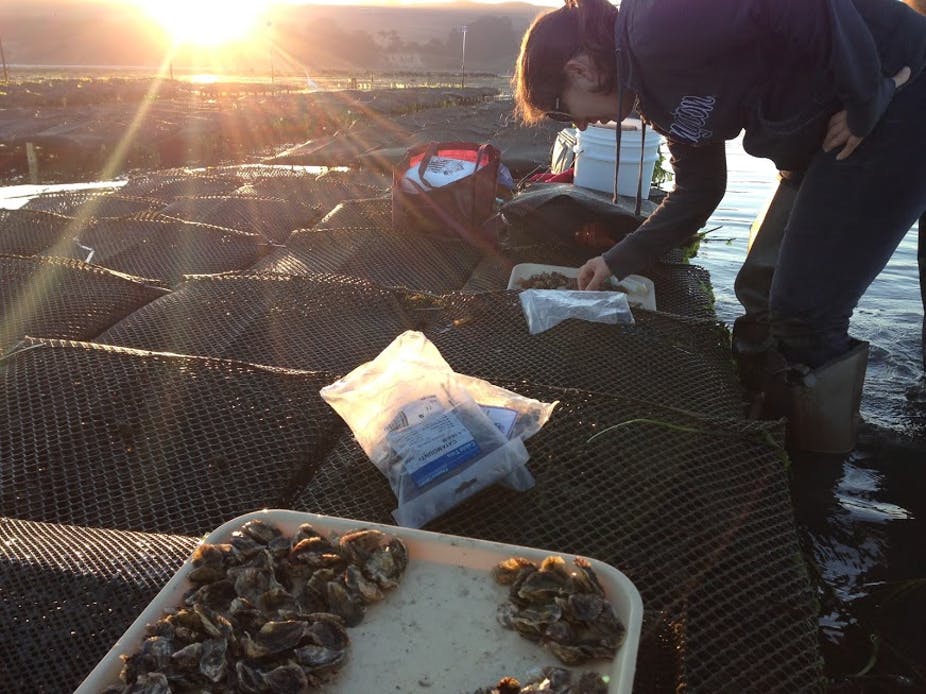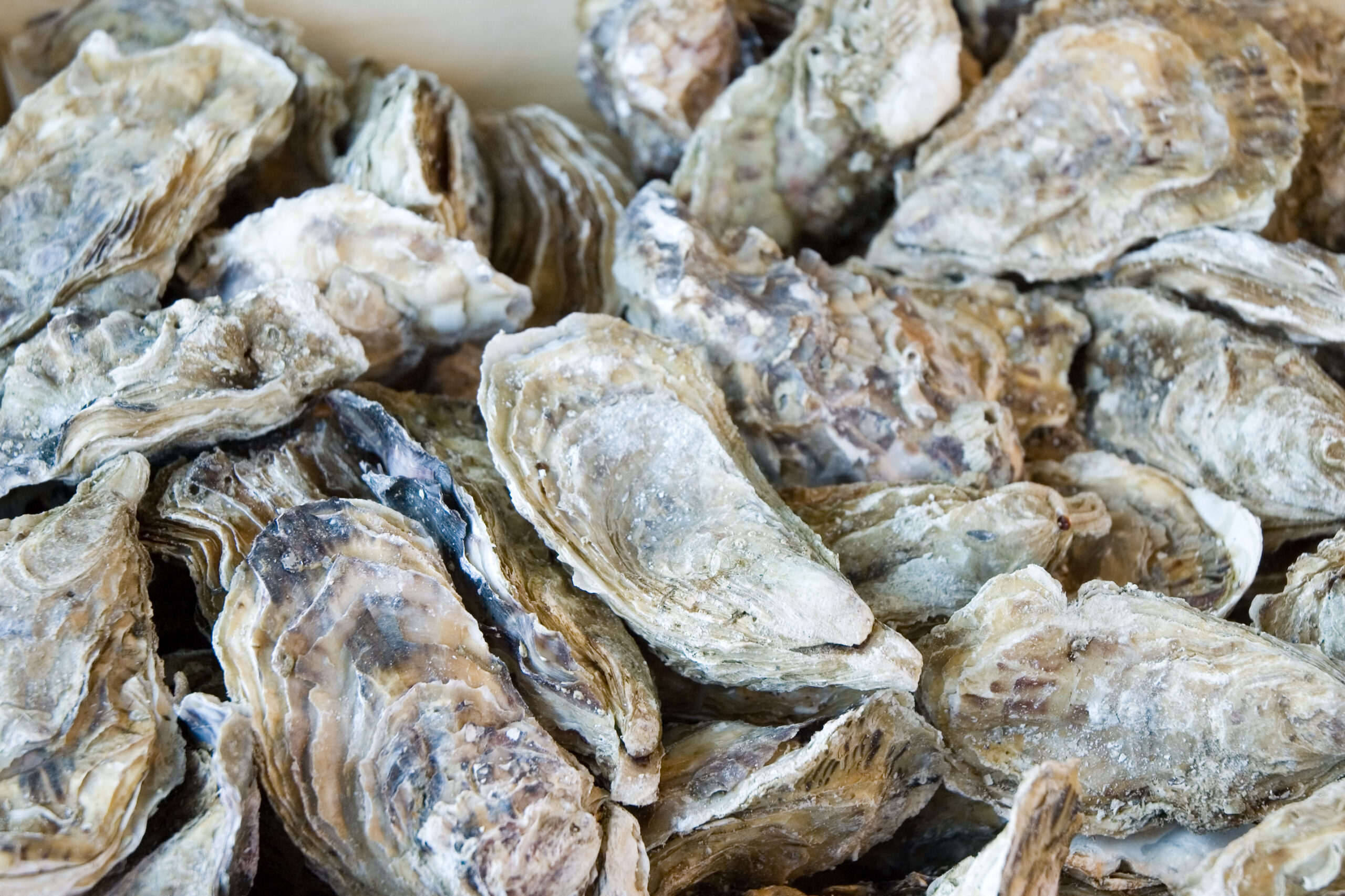Colleen Burge, UMBC assistant professor at the Institute of Marine and Environmental Technology, made a splash with her new article in The Conversation warning of the danger posed by a herpes virus that is decimating oyster populations around the world. Burge conducts research seeking out genes that trigger disease resistance in oysters, potentially offering one path toward protecting this valuable, and vulnerable, marine animal.
Infection by the herpes virus, known as OsHV-1, is usually fatal for Pacific oysters, “the world’s most popular and valuable oyster species,” Burge writes. The Pacific oyster is native to Asia, but the virus has been wreaking havoc on transplanted oyster populations worldwide, from Tasmania to France, since its emergence in the 1990s. Making things worse, the virus has recently mutated to form several “microvariant” strains that are even more deadly. Burge was a member of the team that discovered the virus in two bays along the California coast for the first time in the early 2000s, but so far no microvariants have been found in North America.
“Given the spread of the OsHV-1 microvariants elsewhere around the world, it may only be a matter of time until they reach U.S. coastal bays or other non-impacted oyster growing areas,” Burge writes. That means finding a way to prevent massive oyster die-offs, which have already happened in other parts of the world, is important to save the species.

Beyond their economic and cultural value to the fishing industry, oysters are also prized for the work they do to support aquatic environments. Each oyster can filter up to 50 gallons of water per day and oyster reefs provide habitat and food for fish, including popular commercial species. The spread of a deadly infection among oysters could put all this at risk.
Oysters can’t be vaccinated against the virus, because their immune systems lack the “memory” that benefits more complex organisms, Burge explains. “The most effective strategy to date has been developing disease-resistant oyster lines, which can limit both mortalities and oysters’ susceptibility to infection,” she says, but even that technique comes with caveats.
To test disease resistance, scientists must infect oysters with the virus. Placing those oysters into a wild population that hasn’t previously been exposed to the virus is too great a risk, so scientists are only able to try this technique in areas where the virus already exists, limiting its use. Traditional selective breeding could also produce disease-resistant oysters. Burge is taking it one step further, looking directly for genes involved in resistance.
Burge emphasizes that “the most effective way to limit damage in new locations from OsHV-1 is to limit its spread.” If that becomes impossible, however, introducing resistance will be critical. “Oysters can’t move themselves out of harm’s way, nor can we move all susceptible oysters,” she writes, “so we need to protect them where they grow.”
Colleen Burge’s article, “A deadly herpes virus is threatening oysters around the world”, has been viewed more than 146,000 times and republished by Smithsonian Magazine, The Raw Story, Phys.org, The New Food Economy, and others.
Image: Oysters. Photo by Paul Asman and Jill Lenoble, used under CC BY 2.0.
Tags: CNMS, MarineBiotech, Research

